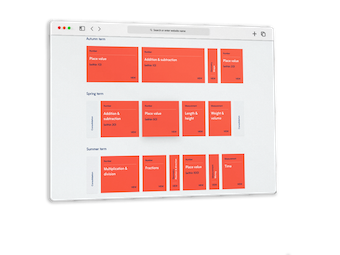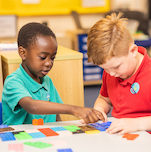At Bunscoill Rhumsaa we use 'White Rose Maths' as the basis of our daily maths lessons.
White Rose uses a mastery approach to maths teaching. This is a research-driven teaching and learning method that meets the goals of the National Curriculum.
What does it mean in practice? In summary, a mastery approach…
Puts numbers first: Our schemes have number at their heart, because we believe confidence with numbers is the first step to competency in the curriculum as a whole.
Puts depth before breadth: we reinforce knowledge again and again.
Encourages collaboration: children can progress through the schemes as a group, supporting each other as they learn.
Focuses on fluency, reasoning and problem solving: it gives children the skills they need to become competent mathematicians.
For each year group, the scheme of learning includes an overview of the maths that your child should be learning at any point in the year.

Each year is split into three terms (autumn, spring and summer), and each term comprises individual blocks of learning about a particular topic. So the Year 4 overview looks like the picture, and Autumn Block 2, for example, focuses on addition and subtraction.
You’ll notice that we spend lots of time building strong number skills in Key Stage 1, Key Stage 2 and early secondary years. These essential core skills lay a solid foundation for more complicated learning later on.
Sometimes a class might be a little behind or ahead of the scheme schedule. That’s fine; there is flexibility built into the scheme to allow for these variations.
Concrete Pictorial Abstract
At the heart of the mastery approach is the Concrete Pictorial Abstract (CPA) approach. Research shows that when children are introduced to a new concept, working with concrete physical resources and pictorial representations leads to a better understanding of abstract concepts. We use CPA throughout our schemes of learning.
